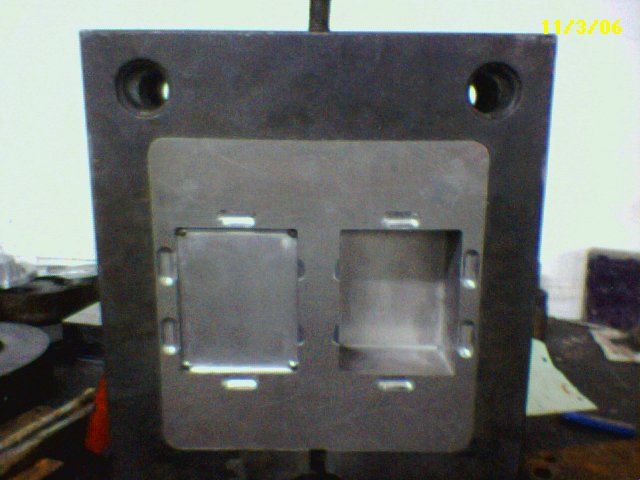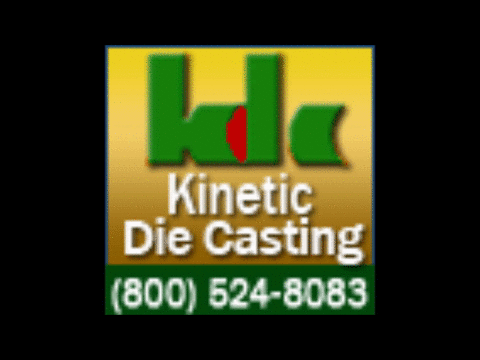Casting is the process of molding metals into different shapes and sizes to create metal parts. One of the oldest casting methods is gravity casting. Gravity casting uses gravity to make sure that all the parts of the mold is …
Continue reading
Tag Archives: aluminum parts
The Different Types of Die Cast Tooling
 The Different Types of Die Cast Tooling. Die cast tooling are the dies and the molds used for die casting. These die cast tools many forms namely Trim Dies used for die cast parts, Die Cast Family Mold Tooling, Complete Class “A” Die Cast Mold Tooling or Die Tooling, Unit Die Tooling, Prototype Die Cast Tooling Inserts and Die Cast Tooling Inserts.
The Different Types of Die Cast Tooling. Die cast tooling are the dies and the molds used for die casting. These die cast tools many forms namely Trim Dies used for die cast parts, Die Cast Family Mold Tooling, Complete Class “A” Die Cast Mold Tooling or Die Tooling, Unit Die Tooling, Prototype Die Cast Tooling Inserts and Die Cast Tooling Inserts.
The die cast tooling inserts since among all the die cast tooling, these are the least expensive. These actually are just enough steel to create cavities plus extra steel to put up with the fluctuations of the temperature of molten metal injecting under force. To extend the tooling life, the inserts should be heat treated to reach their proper hardness, not too hard and not too soft. Making it too soft will cause it to easily get damaged or easily wear from erosion and making it too hard, on the other hand could result to the steel cracking due to high temperature. Toolmakers who do not use enough steel in the inserts may reduce its potential life.
Furthermore, the die casting tooling inserts need to be supported by a type of holder so that metal could be injected into it and also to provide a sort of a path for the metal to pass and go in while the gases escape. These gases should be removed because it can produce porosity. This holder of inserts are called unit die, family die or mold base.
You will need to ask expert toolmakers to do this job for you. You just simply need to look online for you to find the expert that could help you. Varying websites of different die casting companies can be found in the internet. All you need is to choose which is the one nearest you.
Kinetic Die Casting Company makes aluminum die castings using Die Casting Tooling. As a Die Casting Company, we make these parts every day and ship thousands of these aluminum die castings every week.
Contact us to get die casting prices http://www.kineticdiecasting.com/replyform.html.
Kinetic Die Casting Company
6918 Beck Avenue
North Hollywood, California 91605
Sales@kineticdc.com
The Disadvantages of having Porosity in Die Casting
 Disadvantages of porosity in diecasting. Diecasting is a method of molding molten metal, plastic and resin into whatever shape you desire. In order to do this, a machine will need to pour the molten substance into a container and then force it inside the mold until it cools down. The substance will eventually harden and take the form of the die cast mold it is in. Die casting is commonly used in making toys, instruments, costumes and even costumes. However, there are certain problems in which the products become porous which contributes a lot to its brittleness. This is commonly known as die cast porosity, an unwanted result brought about by air pockets and void space inside the molded material. Products with porosity typically are considered to be of low standard and poor in quality. Here are some disadvantages of die casting porosity.
Disadvantages of porosity in diecasting. Diecasting is a method of molding molten metal, plastic and resin into whatever shape you desire. In order to do this, a machine will need to pour the molten substance into a container and then force it inside the mold until it cools down. The substance will eventually harden and take the form of the die cast mold it is in. Die casting is commonly used in making toys, instruments, costumes and even costumes. However, there are certain problems in which the products become porous which contributes a lot to its brittleness. This is commonly known as die cast porosity, an unwanted result brought about by air pockets and void space inside the molded material. Products with porosity typically are considered to be of low standard and poor in quality. Here are some disadvantages of die casting porosity.
Air pockets inside a die cast product; can cause weakness of the material. The structure becomes less stable because the density of the particles melded together is not balanced due to small voids of space within. There are also times when die casting porosity makes the product look less appealing to the buyer or consumer, due to the impression that porosity is a result of low quality machine and materials. Chances of infiltration are also high due to an imbalance in the density of the material. Luckily, there are a lot of ways to reduce the chances of cast die porosity. However, it would also mean an increase in your expense, but it would also increase the chance of more consumers because of your high grade product materials.
Kinetic Die Casting Company makes aluminum die castings using Die Casting Tooling. As a Die Casting Company, we make these parts every day and ship thousands of these aluminum die castings every week.
Contact us to get die casting prices http://www.kineticdiecasting.com/replyform.html.
Kinetic Die Casting Company
6918 Beck Avenue
North Hollywood, California 91605
Sales@kineticdc.com
October 2015 Die Casting Discount
Kinetic Die Casting Company is offering a special ten percent (10%) discount offer using our Kineticdc Facebook page (www.facebook.com/kineticdc).
Like Kineticdc on Facebook
The die casting part discount offer is very simple.
1. Click “LIKE” to like our Kineticdc Facebook page
2. Send us a die casting part purchase order October 1st through October 31, 2015
3. Shipment of parts has to be prior to December 24, 2015
4. We will discount your die casting part price by ten percent (10%) from the prior purchase order part price
5. Die casting part purchases of equal or greater quantity.
Email your die casting part purchase order to sales@kineticdc.com or
Fax your purchase order to 818-982-0877 before 10/31/2015.
Kinetic Die Casting Company 6918 Beck Avenue North Hollywood California 91605
Office Hours: Monday through Thursday 6:00 AM to 4:30 PM (Pacific Time)
818-982-9200 – sales@kineticdc.com – www.kineticdiecasting.com
Do You Need Prices from Kinetic Die Casting for your Die Casting Parts?

Die Casting Part Prices
“The Parts We Make Today, We Ship Today”
Kineticdc makes:
Automotive Die Casting Parts
Airplane Die Casting Parts
Light Fixture Die Casting Parts
Consumer Products Aluminum Parts
Aerospace Die Casting Parts
Military Die Casting Parts
www.kineticdc.com
#discount #diecasting #kineticdc #manufacturing @kineticdc
Die Casting and Porosity
 Die Casting and Porosity. What is Die Casting Porosity? In order for you to know what die casting porosity is, you need to know the die casting basics. The most common form of Die Casting Porosity is a kind of factory defect in which die cast parts contain small pockets of void space and air within the metal, causing it to become porous.
Die Casting and Porosity. What is Die Casting Porosity? In order for you to know what die casting porosity is, you need to know the die casting basics. The most common form of Die Casting Porosity is a kind of factory defect in which die cast parts contain small pockets of void space and air within the metal, causing it to become porous.
What is porosity? Porosity in Die Casting is the air trapped by the metal inside the die casting parts. To know more, a basic knowledge of the die casting process is necessary. Die casting is a process wherein a particular amount of molten metal is put inside a shot cylinder, then it is applied (plunged) with great force with a piston so as to force the metal into a die cast mold or die cast die. During this “plunging process”, air inside the cylinder is forced along with the metal into the die casting mold. It is a very fluid turbulent process. The air forced into the mold with the metal and the metal already inside the mold is forced out of the mold through a series of gates, vents and overflows.
The metal is left to cool down and harden or freeze inside the mold. The metal is then removed as a die cast part. The same process is repeated over again.
Furthermore, die casting companies use metals which are non-ferrous, or do not contain Iron, as this is the highest factor for oxidation and rusting. Several examples of non-ferrous metals include zinc, aluminum, lead, magnesium, tin and copper. Kinetic Die Casting only uses aluminum and zinc.
In the worst case, porosity in die casting parts, weakens die casting parts, if the voids or pockets are very large. Porosity typically matters most in pressure tight die casting parts. When the air escapes through a die casting part, it is typically caused by porosity.
The many forms of Die Casting Porosity are caused by many variables:
- Metal and Mold Temperatures
- Material Cleanliness
- Die Cast Mold Design
- Die Cast Part Design
- Die Casting Machine Pressures
- Die Casting Machine Shot Speed
- Die Casting Spray or Mold Release
- Other forms of porosity can be from “shrinkage” or wall thickness.
Kinetic Die Casting Company makes aluminum die castings using Die Casting Tooling. As a Die Casting Company, we make these parts every day and ship thousands of these aluminum die castings every week.
Contact us to get die casting prices http://www.kineticdiecasting.com/replyform.html.
Kinetic Die Casting Company
6918 Beck Avenue
North Hollywood, California 91605
Sales@kineticdc.com
Aluminum Die Casting–Why Use It!
 Aluminum Die Casting–Why Use It! Many materials can be used in various metalworking processes including in the popular method of die casting. The most preferred materials for die casting are non-ferrous metals such as aluminum, zinc, copper, lead, magnesium and tin-based alloys. Many manufacturers, nonetheless, favor aluminum die casting because of several advantages.
Aluminum Die Casting–Why Use It! Many materials can be used in various metalworking processes including in the popular method of die casting. The most preferred materials for die casting are non-ferrous metals such as aluminum, zinc, copper, lead, magnesium and tin-based alloys. Many manufacturers, nonetheless, favor aluminum die casting because of several advantages.
Manufacturers are able to parlay the metal’s beneficial characteristics by opting for aluminum die casting. For one, aluminum is light in weight but possesses good mechanical properties. Parts with thin walls and complex shapes can be produced at excellent quality and strength by using aluminum alloy. Even at high temperatures, the metal also retains its strength. Aluminum also offers good resistance to corrosion and provides high electrical and thermal conductivity needed in many parts of consumer and industrial products.
Owing to these basic properties, aluminum die casting can produce stronger and more durable components. The malleability of aluminum also allows the production of parts that could be applied with varying types of textures, resulting in fewer finishing touches needed for the end-products.
Aluminum die casting can likewise easily mass-produce parts already tailor-fit for assembly, complete with holes, bosses or studs. These features would contribute to less labor costs and a more efficient production line.
Kinetic Die Casting Company makes Aluminum Casting Parts. As a die casting company, we make these parts every day and ship thousands of these aluminum die castings every week.
Contact us to get die casting prices http://www.kineticdiecasting.com/replyform.html.
Kinetic Die Casting Company
6918 Beck Avenue
North Hollywood, California 91605
Sales@kineticdc.com

